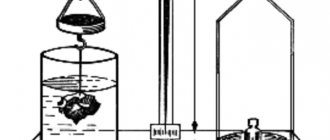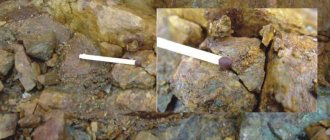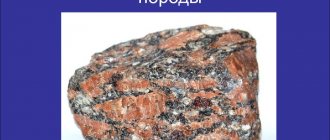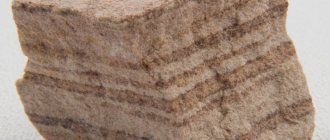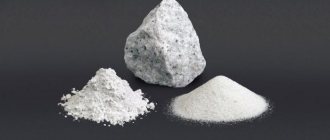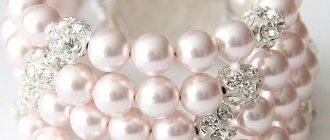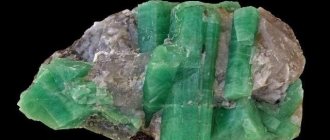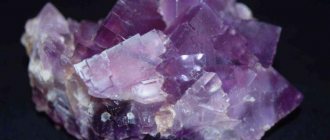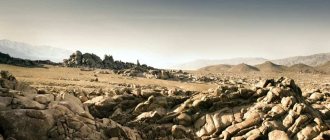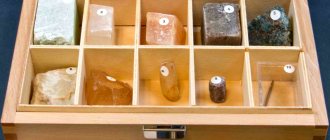The earth's surface consists of minerals, which form rocks. Their formation depends on a number of factors: origin, properties. Each rock has the following characteristics: the size and shape of the minerals, the location of the constituent particles relative to each other. Division depending on origin: igneous, metamorphic and sedimentary.
Igneous species are formed by the activity of magma . It contains a high percentage of volatile elements . Metamorphic species are formed under the influence of endogenous processes (texture and composition change). Sedimentary rocks are located on the surface of the planet. Their formation requires precipitation and low temperatures.
It is quite difficult to compile a complete list of rocks that exist on Earth. Within the framework of the article, the most beautiful specimens are considered and their features are given.
Blue Garnet
This is an amazing creation of nature. Another name is mood stone . Shows different shades throughout the day. Very rarely, in sunlight, you can see a flashing red light from the very depths of the stone.
Where it occurs:
- Tanzania.
- Kenya.
- Madagascar.
- Sri Lanka.
- Norway.
- USA.
It is considered the most expensive type among all garnets.
Features of Blue Garnet:
- High mechanical strength.
- The hardness index ranges from 6.5 to 7.5 (Mohs scale).
- Thermal strength.
Many believe that pomegranate speeds up the healing of wounds and fractures. The gem can also support the human immune system.
Sayan megaliths, Krasnoyarsk Territory
Kuturchinskoye Belogorye is a fairly popular place among hiking enthusiasts from Krasnoyarsk. Located only about 200 kilometers from the city, it doesn’t take too long to get there. And the places are quite picturesque. In this place there are Sayan megaliths - huge stones and prehistoric structures made of large blocks, put together as if by unknown forces.
Together with the unusual nature, this place is considered anomalous - some adhere to the version that the creations made of stone are traces of an alien civilization. Reading the stories of people who have been here, you can even notice a clearly visible pattern - there is practically no one who would not write about the strange feeling of artificiality of the observed “natural monuments”. The many comments from readers about the similarity of the rocks with either a wall or a tower are also striking. No one directly puts forward versions of artificial origin, but everyone perceives a striking similarity with buildings that survived an unprecedented cataclysm.
Some even believe that the Atlanteans and Hyperboreans lived here since ancient times, built castles and erected defensive walls, fought with each other and cleared landing sites for alien ships. The Mansky pillars, in their opinion, are the remains of megalithic structures, deliberately destroyed by a supernova explosion by some weapon unknown to us. Here, for example, is masonry that is clearly not of natural origin, because “nature cannot create straight lines.”
There are a lot of hiking routes in this area - it is unrealistic to cover a large area in one hike, so many return here several times to explore unusual and mysterious places and feel the energy of ancient megaliths...
Location : within the borders of the Eastern Sayan, the ridge is located between the Mana River and its right tributary Mina.
How to get there : The distance from Krasnoyarsk to the ridge is 230 km, about 3 hours by car and 30 minutes on foot. From Krasnoyarsk to the village of Vyezhy Log. Next we cross the bridge over Manu, pass Khabaydak and before the village of Ivanovka (without entering the village) turn sharply to the right. After about a kilometer there is a small lake (quarry), after which the road begins to climb uphill, about 2 km. A little before reaching the “pass”, a very obscure forest road goes off to the left. In good weather, you can get to this place by a regular car, then only by a prepared one. Then follow the forest road, which in one place crosses a wide ditch, and approximately 150 m from the main road there is a small hut. From Izbushka to the nearest rock is a 30-minute walk.
Arsenopyrite
People call it "fool's gold" . Externally, the mineral is similar to the precious metal, but this is only a visual similarity. The person who touches the beautiful stone will be an even greater fool. The chemical composition is arsenic and iron sulfide . When heated strongly, it releases the smell of garlic.
Distinctive features:
- High hardness.
- Tin-white crystal color.
- When heated, it becomes magnetic.
The method for identifying a mineral in nature is quite simple: you need to hit it with a hammer. If sparks fly and a garlicky smell appears, you can be sure that it is arsenopyrite.
Interesting facts about rocks
Fact 1. All rocks can be divided into dense, porous and loose. The former are highly durable and require special tools to process them. The latter are most often igneous minerals that have a small mass, and loose ones can sometimes be completely broken with bare hands.
Fact 2. Some mountains are made up of different rocks arranged in layers, but monolithic massifs are more common. Most mountain peaks over 7,000 meters high are made mainly of granite, as it is highly durable and can withstand enormous pressure. But mountains made of soft rocks, such as chalk, never reach significant heights.
Fact 3. Igneous rocks are usually squeezed to the surface due to monstrous pressure, and therefore often freeze in the most bizarre shapes, forming sagging, drops and other shapes. A striking example is volcanic tuffs. Although the most common igneous rock, and indeed the most common rock in the world, is the aforementioned granite.
Fact 4. All rocks are composed of crystals of various minerals. Moreover, their size can be very, very different - in some crystals you can see the naked eye, while in others you will need a microscope. Moreover, rocks are almost never pure, without impurities, since they consist of different mineral compounds.
Fact 5. Despite the name, rocks are not only found on Earth. It is from them that all earth-like planets (that is, not related to gas giants), many of their satellites, dwarf planets and even asteroids are made up. In the future, resource extraction in space may even become economically viable.
Fact 6. All rocks studied by the science of petrography are divided into three categories - igneous, metamorphic and sedimentary. It’s easy to remember - igneous ones are formed in the bowels of the Earth, sedimentary ones are formed as a result of precipitation, and metamorphic ones appear after the first two categories change under the influence of the environment and become something new. At the same time, sedimentary rocks account for only 10% of their total volume on our planet, but they occupy 75% of the earth's land.
Fact 7. Pumice is the most porous of all rocks. Oddly enough, it is an ordinary volcanic glass, but pumice acquires high porosity (up to 60%) if the molten mineral quickly solidifies while hot gases pass through it. If there are no gases, the same mineral can produce obsidian, which really looks like glass.
Fact 8. Sometimes scientists separately identify so-called clastic rocks. These include, as their name suggests, debris of varying sizes, from large rocks and boulders to pebbles and fine sand. Following this classification, we can say that deserts, for example, consist precisely of clastic rocks.
Fact 9. Humanity has been using various clay rocks since ancient times. Thousands of years ago, ancient people discovered that if clay is moistened with water, it becomes plastic, and after firing it hardens and becomes quite durable. Some clay products found by archaeologists are already several tens of thousands of years old.
Fact 10. Under conditions of high temperature and no less high pressure, rocks can undergo very interesting metamorphoses. Granite, for example, over millions of years can turn into gneiss, which is distinguished by the fact that it looks not granular, but striped (due to the fact that in gneiss the mineral crystals are located parallel to each other, and not chaotically). And quartz sandstone under certain conditions turns into marble.
Lithium
Mineral discovered by a Swedish chemist in 1817. Lithium is in great demand and is used in the following areas:
- Metallurgy.
- Manufacturing of batteries.
- Nuclear energy.
- Medicine.
- Pyrotechnics.
The main production takes place in Afghanistan.
Distinctive features:
- Silver color.
- Pronounced plastic properties.
- High melting point.
- Low density (lower than water).
Stored in tins, immersed in paraffin.
Torburnite
Appearance: green crystal . Location: granite rocks (secondary deposits). Important information: Contains uranium. Torburnite used to attract the attention of collectors because of its beautiful clustering. But this hobby turned out to be dangerous. Radon gas, which the mineral emits, can lead to lung cancer. Today, torburnite helps miners find uranium deposits.
The main deposits are presented below:
- Shinkolobwe (Central Africa).
- Schneeberg.
- Aue.
- Zinvvalde.
Important information: its color can be confused with otenite , but, unlike torburnite, it glows under ultraviolet rays.
Marble Canyon Ruskeala, Karelia
There is a stunning place in Karelia, a pearl of natural mastery - the Ruskeala Natural Park. People come here to enjoy nature and admire the Marble Canyon. In the last century, marble was actively mined here, but after the end of the war, mining stopped, and the canyon began to be filled with crystal clear water. Marble mining in these places began by the Swedes in the seventeenth century, but after the transfer of this area to Russia, the Ruskeala Canyon became one of the main suppliers of marble stone in Russia.
Canyon in summer
The Tokhmajoki River near which the park is located is located near a city called Sortavala. The river has a fast flow and has riffles and rapids. Due to their presence, you can enjoy the view of the beautiful waterfalls. One of them, the Ruskeala cascade, is simply a must-see. The views of the Marble Canyon are varied. These are rocks, grottoes, stone shores with bizarre shapes, adits and, of course, marble magically visible through the water surface. Taking a boat for a walk on the lake, you can see all the beauty of this place. The depth of the lake itself can reach 50 meters. And the dimensions of the canyon itself are 100 meters wide by 460 meters long.
I visited Ruskeala in winter - the park is interesting, there are several walking routes for sightseeing. There is beautiful nature, silence and grace all around!
Well, probably another small plus of Ruskeala is the illumination, which was initially announced as a parody of the northern lights!
The lake is filled with tear-clear groundwater coming from underground, due to this there are no algae at the bottom and you can even see equipment that was once abandoned in a quarry in the clear water.
For tourists, observation decks were built around the entire lake; from there you can admire the picturesque rocks and the turquoise lake itself. In winter, when the water in the lake freezes, many tourists can walk to the beautiful grottoes and mines.
Location : in the southwest of Karelia, approximately 25 kilometers north of the Ladoga skerries and the city of Sortavala.
How to get there : the easiest way is as part of a bus excursion from St. Petersburg (cost from 2,000 rubles). It’s also easy to get there on your own - first we go by train St. Petersburg - Kostomuksha (from Ladozhsky station) to the city of Sortavala (travel time 5.5 hours), and from Sortavala there is a bus to Vyartsilya, which stops in Ruskeala. There is also a retro train from Sortavala - tickets must be purchased in advance on the Russian Railways website (may be sold out). You can also order a taxi (about 600 rubles). By car we drive along the Priozerskoye Highway through Priozersk along the A-129 highway - a distance of 250 km.
Visit : entrance ticket costs 300 rubles, for children 150 rubles. Schedule and operating hours: Mon-Thu and Sun - 10:00-19:00, Fri-Sat - 10:00-21:00.
Have you been able to visit any of these places?
